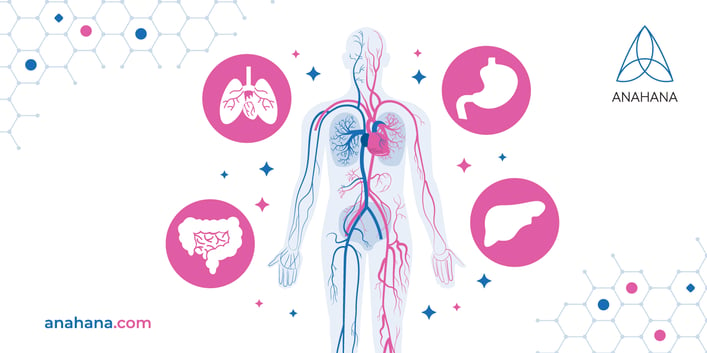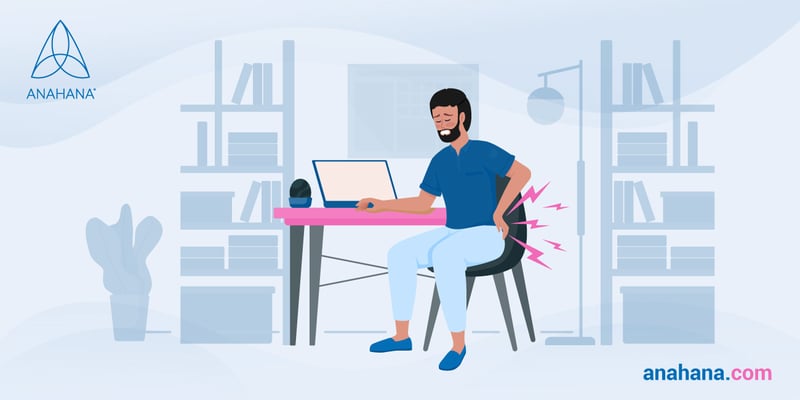
Table of Contents
The polyvagal theory is a collection of evolutionary, neurological, and psychological ideas pertaining to the vagus nerve's role in emotional regulation, social connections, and fear responses. It proposes that the evolution of the mammalian autonomic nervous system provides the constructs for adaptive behaviors.
Key Takeaways
- Definition: Polyvagal theory explores how the vagus nerve influences emotional regulation, social connection, and stress responses.
- Nervous System: It focuses on the parasympathetic nervous system, particularly the vagus nerve's role in calming the body.
- States: The theory identifies three states: safe and social, fight-or-flight, and shutdown, driven by the autonomic nervous system.
- Application: Used in trauma therapy to help understand and manage stress and emotional responses.
- Health Impact: Polyvagal theory is linked to mental and physical well-being.
- Practical Use: Techniques like deep breathing can activate the vagus nerve for relaxation.
What is Polyvagal theory?
Introduced by Stephen Porges in 1994, this theory proposes that the vagus nerve regulates emotions, social connections, and fear responses.
It suggests that the parasympathetic nervous system has three responses: the rest and digest and fight or flight response and the social engagement system, a hybrid state of activation and calming that allows for social interactions.
The vagus nerve is split into two branches: the "ventral vagal system," which supports social engagement behaviors, and the "dorsal vagal system," which supports immobilization behaviors, including both "rest and digest" and defensive immobilization or "shutdown."
Polyvagal theory proposes that the vagus nerve, the longest cranial nerve in the body, is crucial in regulating various physiological and emotional responses.
It suggests that the nerve has evolved to adapt to different environmental and social situations and that it does so by activating different branches of the parasympathetic nervous system.
By activating the "social engagement system" through the ventral vagal system, individuals can feel safe and connected to others.
In contrast, the dorsal vagal system triggers immobilization behaviors when they feel threatened or overwhelmed.
Understanding the role of the vagus nerve and its different branches can help clinicians develop more effective treatments for health problems that target the underlying physiological processes.
The Three Branches of the Parasympathetic Nervous System

The theory proposes that the parasympathetic nervous system, which is traditionally viewed as having two branches - the "rest and digest" response and the "fight or flight" response - actually has a third response called the "social engagement system."
This response is activated when social interaction and communication are necessary.
The "social engagement system" is supported by the ventral vagal system, a branch of the vagus nerve responsible for regulating various social behaviors, such as facial expressions, vocal intonation, and eye contact.
This system helps individuals feel safe and connected to others and is associated with positive emotions such as joy and love.
On the other hand, the dorsal vagal system, another branch of the vagus nerve, triggers immobilization behaviors, such as freezing or "shutdown."
This system is activated when an individual faces a life-threatening situation and needs to conserve energy or feels overwhelmed and needs to withdraw from the environment.
Polyvagal theory suggests that an imbalance in the activation of these different branches of the parasympathetic nervous system can lead to various health problems, such as anxiety, depression, and trauma-related disorders.
By understanding how the vagus nerve functions and responds to different social and environmental cues, clinicians can develop more effective treatments targeting the underlying physiological neural process.
The Anatomy of the Polyvagal System
The polyvagal theory focuses on the anatomical and functional organization of the autonomic nervous system, particularly the vagus nerve's role in modulating our physiological state and nervous system responses.
The theory suggests that the vagus nerve has three neural circuits that regulate adaptive reactivity dependent on social engagement and the dorsal vagal complex.
The ventral vagal complex supports defense strategies, social behavior, and conscious awareness.
The polyvagal theory identifies the neurophysiological foundations of conditions such as psychiatric disorders and has clinical implications for understanding and treating stress-related conditions.
The wandering nerve, or vagal nerve, provides sensory information from visceral organs and regulates the physiological state of the body, especially the cortex.
Overall, the polyvagal theory provides a neural explanation for the biological imperative of social engagement behaviors and highlights the evolutionary heritage.
The Physiology of the Polyvagal System
The social engagement system is at the top of the hierarchy, mediated by the ventral vagus nerve.
This nerve is responsible for our ability to engage with others in social interactions and is activated during moments of safety and relaxation.
The ventral vagus nerve regulates many physiological functions, including heart rate variability, respiratory sinus arrhythmia, and digestive processes.
Below the social engagement system is the sympathetic nervous system, which is responsible for the "fight or flight" response.
This system is activated in response to perceived threats or stressors, and it prepares the body for action by increasing heart rate, blood pressure, and respiration.
At the bottom of the hierarchy is the dorsal vagal complex, which is mediated by the dorsal vagus nerve.
This nerve regulates the body's basic physiological functions, such as breathing and digestion, and is activated during immobilization or shutdown.
Understanding the Three States of the Polyvagal System
The theory, developed by Dr. Stephen Porges, proposes that the autonomic nervous system comprises three distinct states, each associated with specific physiological and behavioral responses.
These states are governed by different nervous system branches, including the sympathetic, parasympathetic, and mammalian autonomic nervous systems.
Stage One of the Polyvagal System is the immobilization response, known as "freeze."
This occurs when the mammalian autonomic nervous system detects danger and triggers a reaction to immobilize the individual to minimize the chance of being detected by a predator.
The dorsal vagal complex results in decreased heart rate, and blood pressure regulates this response.
Stage Two is the sympathetic activation response known as "fight or flight."
This response is triggered when the nervous system detects a threat and prepares the individual to fight or flee.
The sympathetic nervous system is responsible for this response, resulting in an alteration in cardiac rhythm, called respiratory sinus arrhythmia, and altered blood pressure.
Stage Three is the social engagement response, "rest and digest."
This response is regulated by the ventral vagal complex and is associated with feelings of safety and calmness.
The ventral vagal complex and the vagal pathways regulate the parasympathetic nervous system, resulting in decreased heart rate and blood pressure.
Polyvagal Theory and the Nervous System

Polyvagal Theory is a relatively new perspective in neuroscience that helps us better understand how the nervous system responds to stress and trauma.
It emphasizes the importance of the autonomic nervous system, particularly the vagus nerve, in regulating our physiological and emotional states.
By understanding the polyvagal perspective, we can gain insights into how we respond to stress, how to improve our emotional regulation, and how to promote greater resilience in the face of adversity.
The polyvagal theory has also been used to explain the underlying mechanisms of developmental disorders such as autism.
The theory suggests that disruptions to the social nervous system may contribute to the difficulties in social behavior and interaction and communication characteristic of these disorders.
- Sympathetic Response: This refers to activating the sympathetic nervous system, part of the autonomic nervous system. In polyvagal theory, sympathetic activation is associated with the fight or flight response and is often seen as a response to perceived danger.
- Parasympathetic Response: This refers to activating the parasympathetic nervous system, which is also part of the autonomic nervous system. In polyvagal theory, parasympathetic activation is associated with the integrated social engagement system and is often seen as a response to feelings of safety and connection.
The Evolutionary History of the Polyvagal System
The Polyvagal Theory suggests that the autonomic nervous system (ANS) results from evolution, with the older phylogenetically conserved portions of the ANS being more primitive and the more recently evolved portions being more advanced.
The theory proposes that the vertebrate ANS evolved in three stages, each building upon the previous one.
The first stage involves the dorsal vagal complex (DVC) evolution.
DVC is responsible for immobilization and shutdown behaviors in response to threats. This system is found in all vertebrates and is the oldest portion of the ANS.
The second stage involved the evolution of the sympathetic nervous system (SNS), responsible for the fight or flight response. This system is present in all mammals and is more advanced than the DVC.
The third and most recent stage involved the evolution of the mammalian vagus nerve, which gave rise to the parasympathetic nervous system (PNS).
The PNS regulates social engagement behaviors and is unique to mammals. The PNS evolved to promote social behavior and reduce aggression between individuals.
Trauma and the Polyvagal Theory
Trauma can have a profound impact on the polyvagal system. When a person experiences trauma, the sympathetic nervous system can become overactive, leading to feelings of anxiety and hyperarousal.
In response, the parasympathetic nervous system may become less active, making it difficult for the person to calm down and regulate their emotions.
The polyvagal theory suggests that trauma can lead to a dysregulation of the nervous system, which can manifest in various physical and emotional symptoms.
For example, trauma survivors may experience gastrointestinal issues and sleep disturbances, among other symptoms.
The polyvagal theory has provided valuable insights into the impact of trauma on the nervous system.
When individuals experience trauma, their nervous system may become dysregulated, leading to physical and emotional symptoms.
The polyvagal theory suggests that understanding the underlying mechanisms of this dysregulation can inform effective treatments for trauma survivors.
However, the polyvagal theory also offers hope for healing from trauma.
By understanding the nervous system's role in trauma responses, individuals and healthcare providers can work together to develop interventions that promote regulation and healing.
These interventions may include deep breathing techniques, meditation, and other mind-body techniques that can activate the parasympathetic nervous system and promote feelings of safety and relaxation.
Applying Polyvagal Theory in Therapy
Applying Polyvagal Theory in Therapy can help clients understand their nervous system responses and develop new neural pathways that support regulation and social engagement.
Trauma survivors, in particular, can benefit from therapy informed by Polyvagal Theory, as traumatic experiences can dysregulate the autonomic nervous system and lead to maladaptive responses and altered vagal pathways.
Therapists can use facial expressions and social communication to engage clients' social nervous systems and support defense strategies that promote safety and connection.
Polyvagal-informed therapy can also address chronic pain, as it has been linked to autonomic nervous system dysregulation.
By addressing the underlying nervous system dysregulation, therapists can help clients develop new adaptive responses and decrease pain.
The Polyvagal Theory emphasizes the importance of the ventral vagal complex in supporting adaptive functions and responses.
By targeting this area through therapy, clients can develop increased neural complexity and regulate their physiological state.
Additionally, therapists can help clients understand their evolutionary heritage and the brainstem areas regulating their autonomic nervous system.
The Polyvagal Theory provides a comprehensive framework for understanding the role of the autonomic nervous system in emotional regulation, social engagement, and physical health.
Therapists can use this theory to inform their practice, particularly in supporting clients with trauma histories or ongoing pain.
Facial expressions and social communication are powerful tools for engaging clients' social nervous systems and promoting safety and connection.
By using expressions that convey warmth and empathy, therapists can support defence strategies that help clients feel secure and reduce feelings of threat.
Long-lasting pain is a complex condition linked to autonomic nervous system dysregulation. Therapists can address this underlying nervous system dysregulation through Polyvagal-informed therapy and help clients develop new adaptive responses.
By supporting the ventral vagal complex, clients can develop increased neural complexity and regulate their physiological state, decreasing pain.
Therapists can also help clients understand their evolutionary heritage and the brainstem areas regulating their autonomic nervous system.
This can help clients develop a sense of agency and control over their physiological responses, leading to increased resilience and well-being.
Techniques that can be used
Vagal regulation is a key focus of Polyvagal-informed therapy, as the vagus nerve plays a central role in regulating the autonomic nervous system.
Therapists can target vagal pathways through breathwork, meditation, and yoga. These techniques can promote relaxation and activate the parasympathetic response, leading to increased vagal tone and improved regulation.
Therapists can help clients develop new neural pathways, regulate their nervous system responses, and promote social engagement and connection by taking a Polyvagal perspective in therapy.
This approach has important clinical implications for various conditions, including trauma, chronic pain, and anxiety disorders.
Polyvagal-informed therapy offers a range of techniques that can help clients regulate their nervous system and improve their overall well-being.
One such technique is breathwork, which involves slow, deep breathing to activate the parasympathetic response and promote relaxation. This can lead to increased vagal tone and improved autonomic nervous system regulation.
Meditation is another technique that can be used in Polyvagal-informed therapy.
Mindfulness practices can help clients become more aware of their bodily sensations and emotions, promoting emotional regulation and decreasing reactivity to stressors.
This can also help activate the parasympathetic response and promote vagal regulation.
Yoga is a third technique that can be used in Polyvagal-informed therapy. By combining physical postures with controlled breathing exercises and relaxation techniques, yoga can help promote relaxation and improve vagal regulation.
This can also benefit overall physical health, such as decreasing blood pressure and improving cardiovascular function.
Polyvagal Theory and Mindfulness
Polyvagal Theory has also been linked to mindfulness practices, which involve focusing on the present moment without judgment.
Mindfulness and self-regulation have been found to promote increased activity in the ventral vagal complex, which is associated with feelings of safety and social engagement.
Furthermore, mindfulness practices may help regulate the autonomic nervous system and reduce symptoms of anxiety and depression.
By increasing conscious awareness of bodily sensations and emotions, individuals may develop greater insight into their physiological responses to stress and better regulate their emotional reactions.
Practicing mindfulness can also help individuals develop greater self-compassion and reduce self-criticism, which can be particularly beneficial for those who have experienced trauma or chronic stress.
This can promote a sense of safety and connectedness and may enhance social engagement and interpersonal relationships.
The Future of Polyvagal Theory
Polyvagal Theory has gained widespread attention in the field of psychology and neurobiology.
This theory has revolutionized our understanding of the nervous system and its role in regulating our emotions, behavior, and social interactions.
As the research on the polyvagal theory continues to expand, it opens new doors for potential applications in the future.
Applications in clinical practice
The polyvagal theory has already had significant applications in clinical practice.
It has been used to develop new treatment approaches for various mental conditions, including anxiety disorders, trauma, and depression.
In the future, we expect to see continued growth in using polyvagal theory in clinical practice.
One significant application of polyvagal theory in clinical practice has been the development of new treatment approaches for anxiety disorders.
This includes mindfulness-based stress reduction and cognitive behavioral therapy, which target the autonomic nervous system and promote neural regulation.
The theory has also been applied to trauma treatment, providing a framework for understanding the underlying mechanisms of trauma-related symptoms such as dissociation and emotional dysregulation.
Therapists can use this understanding to develop interventions that target the specific nervous system dysregulation associated with trauma.
In addition, the polyvagal ideology has been used to develop new approaches to treating depression.
For example, interventions such as behavioral activation and interpersonal psychotherapy can be informed by polyvagal theory, as they promote social engagement and the neural regulation of the autonomic nervous system.
Technological advancements
Developing new technologies has also opened up new possibilities for applying polyvagal theory.
For example, wearable devices that monitor heart rate variability and other physiological indicators can help clinicians better understand a patient's autonomic state and provide more effective interventions.
Additionally, advances in neuroimaging techniques have allowed researchers to understand the neural processes underlying polyvagal theory better.
The use of wearable technology to monitor physiological indicators has the potential to revolutionize clinical practice, particularly in mental well-being.
Wearable devices can provide clinicians with real-time data on a patient's autonomic state, allowing for more personalized treatment and greater insight into the underlying mechanisms of psychological conditions.
Furthermore, advances in neuroimaging techniques have allowed researchers to investigate the neural processes underlying polyvagal proposition in greater detail.
This has led to a deeper understanding of the complex interactions between the autonomic system, the brain, and behavior.
In addition to wearable technology and neuroimaging, virtual reality has also been used to explore the applications of polyvagal theory in clinical practice.
Virtual reality simulations can create a controlled environment for patients to practice social engagement behaviors and develop new neural and vagal pathways.
Polyvagal theory can expand into new fields beyond psychology and psychiatry. It could inform the development of new technologies that promote better social interaction, improve emotional regulation, and support physical health.
It could also be applied in fields such as education, where understanding the neural basis of learning and behavior could lead to more effective teaching strategies.
Polyvagal theory's potential expansion into new fields is significant because it emphasizes the connection between the autonomic nervous system and social engagement.
This connection has broad implications for various areas, including technology, education, and physical health.
One area where polyvagal theory could have a significant impact is technology.
Wearable devices that measure heart rate variability and other physiological indicators could be used to develop new applications that promote emotional regulation and social engagement.
For example, a wearable device that provides biofeedback to the user when their physiological state indicates stress or anxiety could help them develop adaptive coping strategies and promote emotional regulation.
Polyvagal theory's focus on the neural basis of learning and behavior could lead to more effective teaching strategies in education.
By understanding the role of the autonomic nervous system in learning, educators could design interventions supporting students' physiological regulation, increasing their engagement and learning ability.
As with any scientific theory, there is always more to learn about polyvagal theory.
Continued research will help to refine our understanding of the nervous system and its role in regulating our emotional, behavioral, and social responses.
This research could lead to new insights and interventions that help individuals overcome mental health challenges and lead more fulfilling lives.
Criticisms of Polyvagal Theory
Polyvagal Theory is a widely accepted and influential theory in psychology and neuroscience, but it is not without its critics.
One of the most common criticisms of Polyvagal Theory is that there is limited empirical evidence to support its claims.
While some research supports the theory, many studies have small sample sizes, and few studies have replicated the results.
Critics also argue that Polyvagal Theory provides a simplistic explanation of complex phenomena.
For example, the theory suggests that the nervous system has only three branches, but recent research has shown that there may be more than three.
Additionally, the theory's focus on the vagus nerve and the fight-flight-freeze response ignores the role of other important biological and psychological factors in regulating the nervous system.
Another criticism of Polyvagal Theory is that it overemphasizes the vagus nerve's role in regulating the nervous system.
While the vagus nerve is an important part of the nervous system, it is not the only factor that influences the nervous system.
The theory's focus on the vagus nerve can lead to an oversimplification of complex nervous system processes.
Critics also argue that Polyvagal Theory does not give enough attention to social and environmental factors that can influence the nervous system.
For example, the theory's emphasis on the fight-flight-freeze response does not account for the role of social support in regulating the nervous system.
Cranial Nerves and the Polyvagal Theory
The polyvagal theory is a neurobiological theory that explains the nervous system's role in regulating emotions and behavior.
The theory proposes that the vagus nerve, composed of cranial and spinal nerves, plays a crucial role in regulating the nervous system.
Specifically, the theory suggests that the ventral vagus nerve, composed of cranial nerves X, IX, and X, regulates the nervous system and promotes social engagement behaviors.
The cranial nerves regulate bodily functions and behaviors, including expressions, speech, swallowing, and vision. According to the polyvagal theory, the cranial nerves regulate the nervous system and emotional responses.
Cranial nerves IX and X, part of the ventral vagus nerve, control breathing, heart rate, and digestion functions.
Dysfunction of these cranial nerves has been associated with various psychological conditions, including anxiety and depression.
In polyvagal-informed therapy, therapists can use vocalization exercises, eye contact, and facial expression to target the cranial nerve fibers and regulate the nervous system.
Therapists can promote relaxation, reduce anxiety, and improve social engagement behavior by activating the ventral vagus nerve.
Furthermore, understanding the role of the cranial nerves in the polyvagal theory has important implications for developing new interventions for mental health conditions.
By targeting the specific functions of the cranial nerves, clinicians can develop new techniques to treat conditions such as anxiety, depression, and post-traumatic stress disorder.
Primitive Neural Circuits in the Polyvagal Theory
The polyvagal theory also emphasizes the importance of primitive neural circuits in regulating the physiological nervous system response to stress and danger.
According to the theory regarding neural circuits, the dorsal vagus nerve, which is composed of primitive cranial nerve structures and nerve fibers and the dorsal motor nucleus, regulates the freeze response and supports defence strategies used by many animals in response to a perceived threat.
The theory suggests that this response is an evolutionarily conserved strategy activated when the social engagement system is overwhelmed.
The theory also proposes that cardiac vagal nerve tone, or the regulation of heart rate variability by the vagus nerve, is a key indicator of emotional regulation and social behavior.
The theory suggests that high levels of cardiac vagal tone are associated with increased social behaviors and emotional regulation.
In contrast, low levels are associated with issues in the central nervous system regarding emotional dysregulation and social isolation.
Studies have shown that increased cardiac vagal nerve tone is associated with greater emotional regulation, while low levels are associated with emotional dysregulation and social isolation.
The theory proposes that interventions to increase cardiac vagal tones, such as mindfulness practices and social support, can positively impact emotional regulation and social functioning.
These findings suggest that the vagus nerve and vagal pathways play a crucial role in regulating our emotional and social responses, and interventions that target this system may effectively promote well-being.
Polyvagal Theory and the Gut-Brain Connection
Recent research has highlighted the connection between visceral organs, the gut and the brain, with the gut being called the "second brain." These special visceral efferent pathways are crucial to the normal functioning of the gut-brain connection.
The theory suggests that the vagus nerve plays a key role in this connection, regulating the functioning of the digestive system and influencing health and well-being.
Understanding the biological imperative of the gut-brain connection may inform effective interventions for various physical and health issues.
Recent research has shown a strong connection between the gut and the brain, known as the "gut-brain axis."
This connection and the communication of sensory information between the two is facilitated by the vagus nerve fibers, which regulate the functioning of the digestive system and influence health and well-being.
The polyvagal theory suggests that the vagus nerve is an essential component of this connection, playing a critical role in communicating sensory information between the gut and the brain.
This connection significantly affects various physical and health issues, including anxiety, depression, and gastrointestinal disorders.
By understanding and targeting the underlying mechanisms of the gut-brain axis, interventions can be developed that promote overall health and well-being.
Polyvagal Theory and Pain

The polyvagal theory proposes that pain may be related to dysregulation of the autonomic system, particularly the sympathetic system.
Research suggests that the sympathetic nervous system, responsible for the body's "fight or flight" response, can become overactive in individuals with pain. This can lead to increased pain sensitivity and worsening of symptoms.
By understanding the underlying mechanisms of pain, interventions can be developed that target these systems and promote effective pain management.
For example, mindfulness practices and other relaxation techniques have decreased sympathetic nervous system activity and reduced pain in individuals with long-term pain.
The relationship between the central nervous system and pain is complex and multifaceted.
The theory offers a framework for understanding how dysregulation of this system can contribute to developing and maintaining persistent pain.
By examining the role of the sympathetic system in pain processing, researchers have identified potential targets for intervention.
In addition to relaxation techniques, other interventions that target the central nervous system, specifically the brain, have shown promise in treating pain.
For example, biofeedback and neurofeedback can train individuals to regulate their responses, decreasing pain sensitivity and improving pain management.
The theory also suggests that addressing underlying emotional dysregulation may be important to effective pain management.
By promoting social behavior and emotional regulation, therapies informed by the theory may reduce the psychological distress associated with chronic pain, leading to improved outcomes.
Frequently asked questions
Is polyvagal theory evidence-based?
The polyvagal theory is only partially evidence-based. Although the claims of the vagus nerve are anatomically and physiologically correct in this theory, many experts have recently concluded that the polyvagal theory and the assumptions accompanying it are untenable. This indicated that the theory that the vagus nerve fibers are responsible for certain emotional responses and social behaviors and the fight or flight response could not be maintained or defended against opposing arguments.
Why is polyvagal theory controversial?
The human experience and the emotions accompanying these experiences are widely complex and can be influenced by many factors. The polyvagal theory is controversial because it oversimplifies human emotional behavior and reactions. It negates and ignores the heterogeneity of the human experience and the internal emotional reaction. Another reason for being controversial is the theories inability to be supported by current neuroscience. It is a theory that needs to be updated and aligned with new neuroscientific discoveries made in recent years.
Resources
The official website of Stephen Porges, the founder of Polyvagal Theory:
The Polyvagal Institute, resources and training on Polyvagal Theory:
The National Institute for the Clinical Application of Behavioral Medicine
Polyvagal Theory: A biobehavioral journey to sociality
Polyvagal Theory: A Science of Safety
The polyvagal theory: New insights into adaptive reactions of the nervous system
Mindfulness-Based Movement: A Polyvagal Perspective
Regulation, Polyvagal Theory, and Children’s Prosocial Development
Disclaimer
The contents of this article are provided for informational purposes only and are not intended to substitute for professional medical advice, diagnosis, or treatment. It is always recommended to consult with a qualified healthcare provider before making any health-related changes or if you have any questions or concerns about your health. Anahana is not liable for any errors, omissions, or consequences that may occur from using the information provided.

By: Emma Lee
Emma is an editor for Anahana and a soon-to-be graduate of the Master of Science program at the University of Toronto. She graduated with a Bachelor’s in Neuroscience and Immunology at the University of Toronto and has extensive experience in research. She is passionate about learning the science behind health and wellness and hopes to contribute her knowledge to help people live healthier lives. Outside of Anahana, Emma enjoys exploring nature, playing with her dog, and doing arts and crafts.